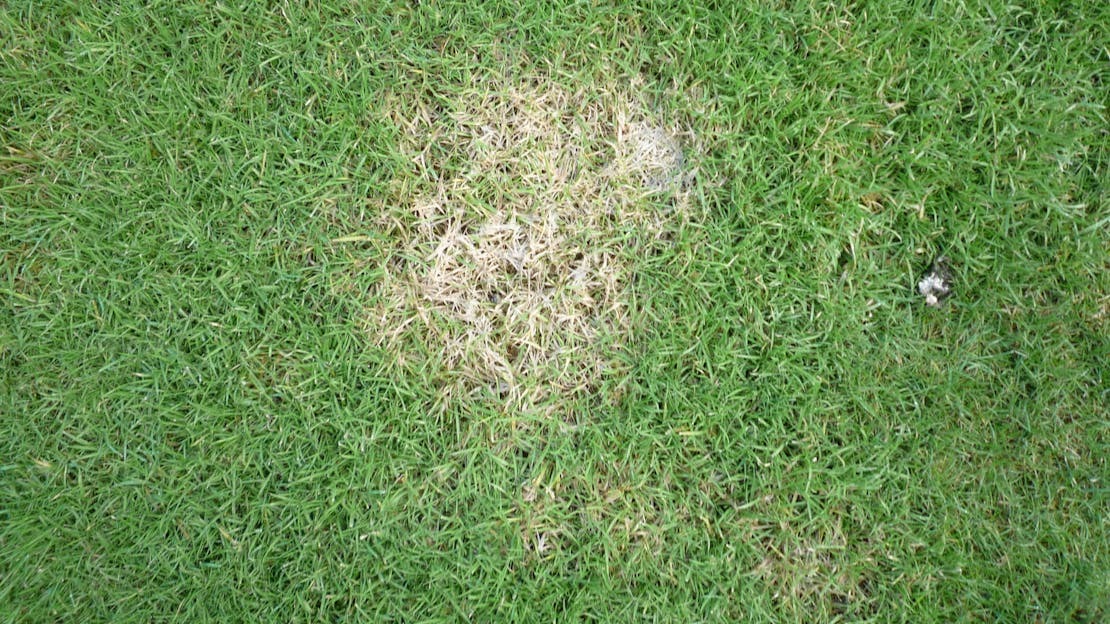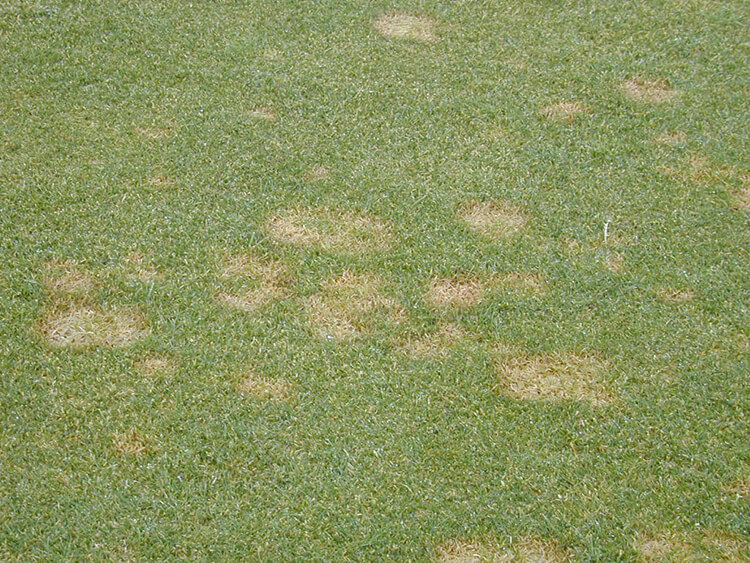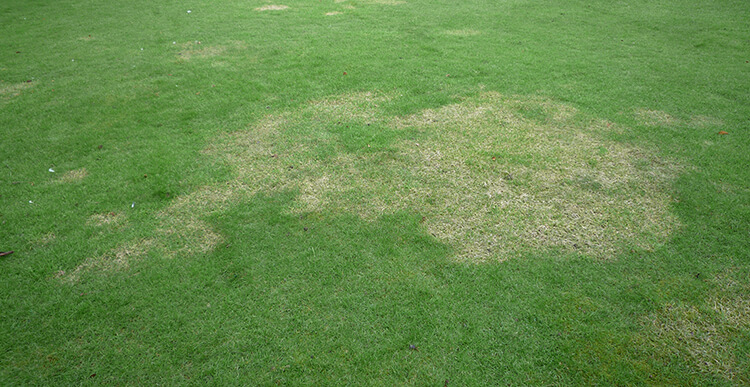
Fusarium & Snow Mould
Fusarium disease is quite a common lawn problem. Treatment and prevention can involve good lawn care practices, fungicides or use of ferrous sulphate.
Evident in cool wet conditions from late autumn to spring.
Fusarium or fusarium patch is the more common of the two lawn problems whilst snow mould is exactly the same disease that occurs after prolonged snow cover. Fusarium is primarily a disease of fine or old turf generally occurring in the late autumn during prolonged damp weather and also in winter usually during a mild spell. It can be damaging because it kills the grass plants though you may end up with small infestations and not notice it.
If you do notice it you will see small tennis ball size straw coloured spots. These get bigger in the right conditions. Whilst the disease is growing the perimeter has a slimy coating of whitish fungal mycelium. This can make the patches irregular in shape looking like fluffy clouds.

Constant moisture (drizzle or fog) or turf with a heavy thatch layer, compaction, poor drainage, clay soil or shade are more prone to attack. This means late and heavy applications of nitrogen fertiliser can make the grass plant more susceptible to the disease.
New lawns can also suffer particularly after snow or during misty damp conditions. This is primarily because they are young and relatively tender and have not built up much resistance to disease and fungal attack. Do NOT go overboard with remedies as the attack is due to poor conditions rather than poor lawn care. We therefore suggest just an application of an iron based product at the lower rate once the lawn is at least 3 months old as in Remedy 1 below. This will not cure the problem if you already have an outbreak but should help prevent it from getting worse.
Prolonged compacted snow cover will often cause an outbreak. You can reduce the chance of snow mould damage by NOT throwing snow on the lawn from paths and driveways and removing snowmen and snowwomen once they’re finished with.
Remedy
If you do get an outbreak you should treat it as a wake up call that the lawn conditions are not the healthiest. Fusarium treatment should include inspection for thatch, scarifying as required (when conditions are right - usually March onwards) and hollow tine, slit or spike to improve drainage.

Remove clippings after mowing and ensure the autumn fertiliser treatment is slow release nitrogen with a good amount of potassium such as Lawnsmith® AUTUMN Lawn Feed. This should be no later than November in the south or October in Scotland. More importantly, late autumn and early winter applications of Ferrous Sulphate (Soluble Iron), typical in the sports turf industry, will harden the turf thus helping protect it from such diseases. Alternatively use a combined iron fertiliser such as Lawnsmith® WINTER GREEN High Iron - a fertiliser blended specifically for hardening turf and ideal for application in late autumn and winter. Any application after an outbreak will not cure the problem but should help prevent it from getting worse.
Fungicidal Control
Many chemicals are being withdrawn as too hazardous to health or the environment. This is happening with many turf fungicides and as of 2019 most will be unavailable so the best options are good lawn maintenance and early dosing with Ferrous Sulphate.
Repairing Damage
Should you suffer an attack which leaves considerable damage (new turf can suffer badly) it’s worthwhile helping the lawn recover otherwise you may well find the patches invaded by weeds and weed grasses!
Do this in the spring NOT before:
- Rake patches to clear dead grass and expose the soil
- Densely spike patches around 1/2″ deep
- Add matching seed at 10 to 20 seeds per square inch
- Brush then tread seed in
- Fertilise patches if not doing the whole lawn
- Keep damp
- Mow on the high side with sharp blades for the first 2-3 months
Do NOT add soil or peat to cover the seed as you will create a bump in the lawn. If you feel some covering is worthwhile use pegged polythene, plant fleece or a light covering of straw which can be removed after germination.